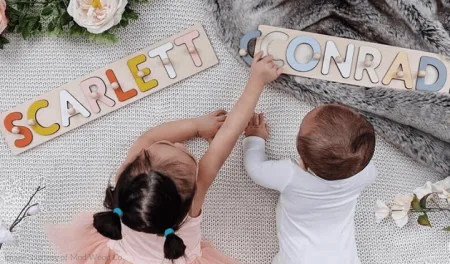In any home, the living room is often the focal point, drawing attention from all who enter. Choosing the ideal sofa is essential to designing a home that is warm, useful, and fashionable. Ensuring that this piece of furniture is just right is crucial, not only for aesthetic appeal but also for comfort and functionality.
This guide will provide you with practical and professional advice on selecting the right sofa for your living room, thus helping you to create the perfect interior design for your space.
Defining a Sofa: More than a Living Room Staple
A sofa transcends its function as a piece of furniture. It’s an aesthetic choice, a reflection of personal taste, and often, the anchor of a room’s decor
Why Size and Shape Matter: Sofa Size and Shape Considerations
Selecting your sofa’s proper size and shape can significantly influence the room’s ambiance and practicality.
1- Room Layout and Sofa Size:
Considering the room’s layout and the sofa’s position on other pieces of furniture is essential. Think about the surrounding space – will you include a coffee table, chair, or footstool? Be sure to leave ample room for movement and flow.
2- Best Sofa Dimensions for Your Space
Sofa dimensions should be guided by the room’s size and the scale of other furnishings. Remember to consider width, depth, and height. As a rule of thumb, the sofa should not occupy the entire width of your living room wall, but rather, it should complement the room’s perimeter.
3- The Impact of Sofa Depth:
Too deep might swallow you; too shallow might feel inadequate. Find that sweet spot for optimal comfort.
The sofa’s depth can significantly impact its comfort level. A deep-seated sofa might be perfect for lounging but may look out of place in a formal, traditional setting.
Understanding the Sofa Sizes
The right sofa size will correlate directly with the size of your living room. Sofas come in a variety of standard sizes, which, while not comprehensive, do offer a helpful starting point:
Loveseats: These are small sofas designed to seat two people comfortably. Ideal for compact living spaces or as complementary seating in larger rooms, loveseats typically measure between 52-71 inches in length.
Apartment sofas: Slightly larger than a loveseat, apartment sofas can comfortably seat three people and typically measure around 72-80 inches in length. They are a suitable choice for apartments or small living rooms.
Standard sofas: The most common sofa size, standard sofas usually measure 81-88 inches long. They comfortably seat three people, are versatile, and can fit into various living room sizes.
Sectional sofas: Sectional sofas are large seating units designed to accommodate multiple people, often four to five or more, with configurations such as L-shape or U-shape. They provide ample seating space and are popular for larger living rooms or open-concept spaces.
Diving into Sofa Dimensions
Apart from length, it’s essential to consider the depth and height of a sofa, which significantly impacts its comfort and appearance.
Depth: The depth of a sofa is typically the measurement between the front edge of the seat and the backrest. It affects how far back you can lean and how your legs will rest on the floor. Standard-depth sofas typically range from 21-24 inches deep. If you prefer to lounge and sprawl on your couch, consider a sofa with a deeper seat, around 40-44 inches.
Height: The height of a sofa can affect the aesthetics of your living room and your comfort level. A standard sofa height is around 18 inches off the ground, with the backrest’s height around 30-36 inches.
However, these numbers can vary depending on the style of the sofa. For instance, a low-profile modern design may be lower to the ground, while a traditional, plush design might sit a bit higher.
The Role of Scale in Sofa Sizing
Remember, it’s not just about the sofa’s dimensions; you also need to think about scale. The sofa should be proportional to other furniture and the room’s size. An oversized, overstuffed couch could dwarf another table in a small room, whereas a delicate loveseat might seem lost in a spacious living room.
Determining the right sofa size and dimensions isn’t just about measuring your living room. It’s also about assessing your comfort preferences, considering the scale of other furniture, and choosing a size that meets your seating needs.
A sofa is a significant investment and often a centerpiece of your living room, so selecting the perfect one will pay off in the long term.
Matching Sofa to Your Living Room’s Interior Design
Choosing the right sofa can transform your living room’s look and feel, blending seamlessly with your interior design style.
1- Understanding the Role of Design in Sofa Selection:
The design of the sofa should blend seamlessly with the interior style of your living room. Whether your home exudes a classic, modern, rustic, or eclectic style, your sofa should enhance that aesthetic.
2- Sofa Styles for Different Living Room Themes
The style of your sofa can define your living room’s overall look. For a modern minimalist approach, consider clean lines and neutral hues. A traditional setting might call for a classic Chesterfield sofa, while a casual beach theme could benefit from a relaxed slip-covered sofa.
3-How Color Affects the Room’s Mood:
The color of your sofa should coordinate with the rest of your living room décor. Neutral tones can create a calm, timeless environment, while bold hues can add a dash of vibrancy and energy.
Choosing the Right Sofa Material:
One of the most important factors to take into account when purchasing a sofa is the material. It influences your furniture’s comfort, appearance, durability, and maintenance requirements. While many options are available, we’ll delve deep into understanding different sofa materials, with a particular emphasis on leather.
1. Leather Sofas: The Epitome of Luxury
Genuine Leather: Authentic leather is a premium choice for its durability, aging quality, and unique texture. Here are the types you might encounter:
Full-Grain Leather: This is the highest quality leather. It includes the outer layer of the hide, making it more durable and uniquely patterned.
Top-Grain Leather: It has been sanded to remove flaws and give a more uniform appearance, making it a more cost-effective substitute for full-grain.
Split Leather: This comes from the lower layer of the hide and is more susceptible to damage than top and full-grain.
Bonded Leather: It’s made by blending leather scraps and polyurethane. While more affordable, it’s also less durable.
Advantages of Leather Sofas:
Durability: Leather is rigid yet flexible, preventing it from getting easily scratched or punctured.
Age Gracefully: Unlike many fabrics that deteriorate over time, leather can often look better with age, developing a rich patina.
Easy to Clean: Dust, allergens, and spills can be easily wiped off.
Comfort: Because leather regulates your body temperature, it is cozy in both the summer and the winter.
Considerations when Buying a Leather Sofa:
Price: Genuine leather sofas typically cost more money. Although it’s an investment, with the right maintenance, it can survive for decades.
Maintenance: While it’s relatively easy to clean, leather needs regular moisturizing to prevent it from drying out and cracking.
Variations: Each leather sofa is unique, with natural markings, grains, and color variations.
2. Fabric Sofas:
Cotton: Cotton fabric is soft and natural, making it a comfortable choice. It is relatively durable but might be prone to wrinkling and soiling. Often, cotton blended with synthetic fibers is used for enhanced durability.
Linen: Linen gives a crisp, clean, and natural feel. However, it wrinkles and soils easily, making it better suited for formal, less-frequented rooms.
Polyester: It’s a common synthetic fabric that is frequently combined with natural fibers to increase crease resistance and lessen fading.
Velvet: Velvet is a luxurious, soft fabric that leans towards the dramatic.
3. Synthetic Options:
Microfiber: Made from finely woven synthetic fibers, microfiber is known for its durability and stain resistance, making it perfect for households with kids or pets.
Nylon: It is one of the most durable upholstery textiles and is frequently mixed with other fibers. Nylon resists getting soiled but might be prone to pilling.
Olefin: This is a wise option for furniture that may experience significant wear. It is durable and colorfast. It’s colorfast and robust.
4. Other Materials:
Vinyl: It looks similar to leather and is less expensive. While it might feel less luxurious, it’s an excellent choice for busy or messy households due to its durability and easy cleaning.
Silk: Luxurious but delicate, silk is best reserved for formal living rooms. Spills can easily damage it, and it is susceptible to sun damage.
When selecting your sofa material, it’s essential to balance aesthetics with functionality. If you’re looking for a blend of luxury, durability, and timeless appeal, a leather sofa might be the perfect choice. Whether you pick a rich top-grain leather couch or a soft suede one, it’s bound to add character and sophistication to your living space.
The Art of Sofa Selection: Tips for Choosing the Right Sofa
A key factor when selecting a sofa is the material. Durability, maintenance, comfort, and appearance all come into play. Leather, for instance, is durable, easy to clean, and can add a touch of luxury to your space.
Find a balance between aesthetics and comfort. While a sofa should be visually appealing, it must also provide adequate comfort for daily use.
The choice of material significantly impacts a sofa’s comfort and durability For example, leather sofas are well-known for being long-lasting and simple to maintain, making them a popular option for homes with kids or animals.
Upholstery is not just about aesthetics; it plays a pivotal role in the comfort and longevity of a sofa. While materials like leather are durable and easy to clean, others like velvet can add a luxurious touch to your living room.
Selecting other furniture that blends in with your sofa and gives the room a finished appearance.
Speaking of versatility and comfort, Valencia Home Theater Seating offers a range of elegantly designed plush sofas that are perfect for creating a cozy yet sophisticated living room or a personalized home theater experience. Their seating solutions seamlessly blend functionality and style, proving that a good sofa is a vital centerpiece in any living space.
Sofa Care and Maintenance for Longevity
Maintaining your sofa extends its life and keeps it looking its best. Vacuum regularly and clean spills promptly. Regular wiping and occasional treatment with a leather conditioner can keep them supple and attractive for leather sofas.
Final Thoughts:
It might be fascinating to search for the ideal sofa for your living space. It takes more than just purchasing furniture to furnish a space so that it feels like home. So take your time, make informed decisions, and soon you’ll be sitting back on your perfect sofa, admiring the transformation of your living room.



